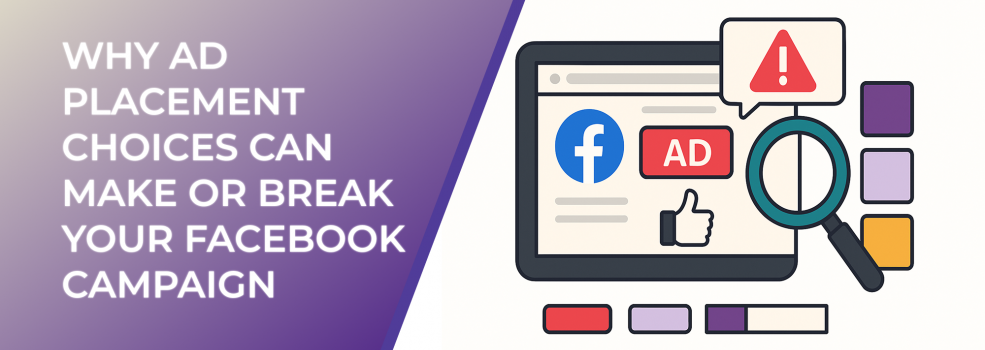Why Ad Placement Choices Can Make or Break Your Facebook Campaign
Ad placement on Facebook might seem like a small technical setting, but it holds tremendous sway over your campaign’s performance. Whether you’re targeting B2B audiences or running dynamic eCommerce ads, where your ads appear can dramatically influence reach, engagement, cost, and ultimately, lead generation success.
With more than 2.9 billion monthly active users on Facebook and a variety of ad placement options—ranging from Feed to Stories, Reels, In-Stream videos, and the Audience Network—understanding how placements align with your goals is essential. Poor placement strategy can lead to budget waste and underperformance, while smart choices can drastically improve your ROI.
The Data Speaks: Placements Affect Performance
According to Meta’s own benchmarks, campaigns that use automatic placements see 71% more conversions compared to those using only Facebook Feed. But that doesn’t mean automatic placements are always the best choice—context, creative format, and audience intent matter.
Figure 1: Comparative breakdown of Facebook ad placements based on performance metrics like CTR, cost, engagement, and reach.
Here’s how different placements typically perform:
-
Facebook Feed: High engagement, but also higher CPM.
-
Facebook Stories: Ideal for quick CTA content; vertical format required.
-
Right Column: Lower engagement, but low cost—better for retargeting.
-
In-Stream Video: Great for video views and mid-funnel engagement.
-
Audience Network: Broader reach, but often lower quality leads.
Choosing the wrong one can impact everything from click-through rate to cost per lead.
Why Strategic Ad Placement Matters
-
Lead Quality Varies by Placement
Placements like the Audience Network may yield higher impressions, but they often result in lower-quality leads. Conversely, Feed and Stories placements usually engage users with stronger intent. -
Cost Efficiency
Facebook ad auctions operate on a competitive basis. Less saturated placements can drive down your CPC and CPA. For example, campaigns optimized for Stories placement often report 20–30% lower cost-per-action. -
Creative-Placement Fit
Misaligned creatives—like landscape videos in vertical Stories—can tank performance. Tailor your visuals to suit placement specs.
Common Mistakes and How to Avoid Them
A misstep in placement strategy is often a root cause of poor campaign results. We explored this in detail in our article on Facebook Ad Mistakes. Here are three critical errors to avoid:
-
Relying Solely on Automatic Placements: It's not one-size-fits-all. Evaluate performance data and customize as needed.
-
Ignoring Right Column Opportunities: While low-profile, this placement is gold for retargeting audiences at a low cost.
-
Failing to A/B Test Placements: Test each placement individually before allocating budget broadly.
How to Make Smarter Placement Decisions
-
Know Your Objective
A lead gen campaign will benefit more from Feed placements than Video Views or In-Stream ads. Align your placements with your conversion goals. -
Use Split Testing
Test placements separately to identify what drives the best cost per lead and highest-quality engagement.
Figure 2: Real campaign example showing a 39% decrease in Cost Per Lead by optimizing placements from automatic to Feed & Stories. -
Leverage Behavioral Data
Use tools like LeadEnforce to build precise custom audiences and then observe which placements convert best for each segment. -
Adjust Based on Funnel Stage
Use broader placements for top-of-funnel awareness, and narrow, high-intent placements (like Facebook Feed) for mid and bottom-of-funnel stages.
Take the Lead with Strategic Placement
To build powerful lead generation campaigns, don’t treat ad placement as an afterthought. It's one of the most critical settings in your Facebook Ads Manager. Use placement-specific creative, test performance rigorously, and make data-driven decisions.
If you're unsure where your campaign is leaking budget, it might be time to review how placement is affecting your results. For more tips, explore our article on Factors That Influence the Cost of Facebook Ads.
Final Thoughts
Your Facebook campaign's success hinges on more than budget and targeting. Ad placement can quietly make or break your lead funnel—so treat it with the strategic importance it deserves.
Need a system to optimize your targeting and lead flow? LeadEnforce helps you create high-performing audiences that make your placements even more effective.

